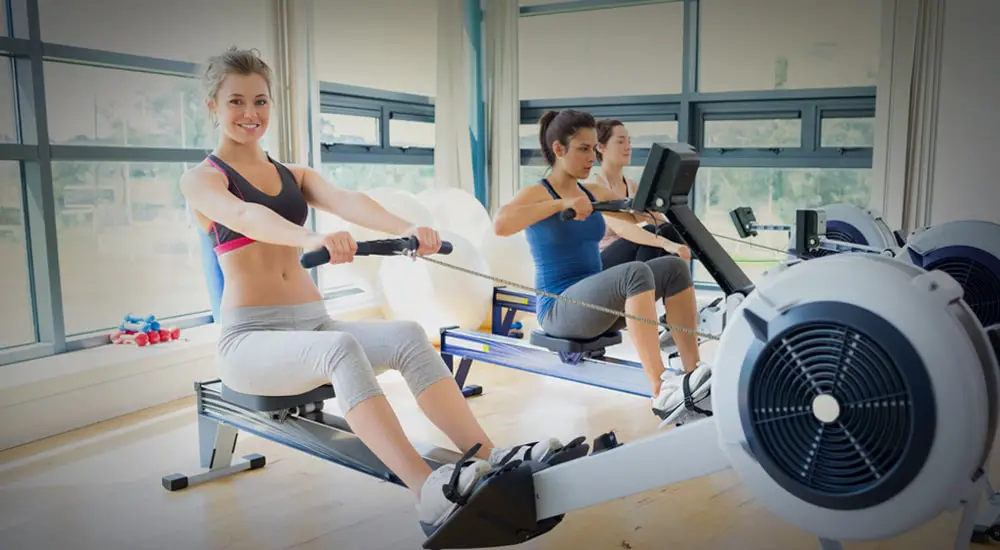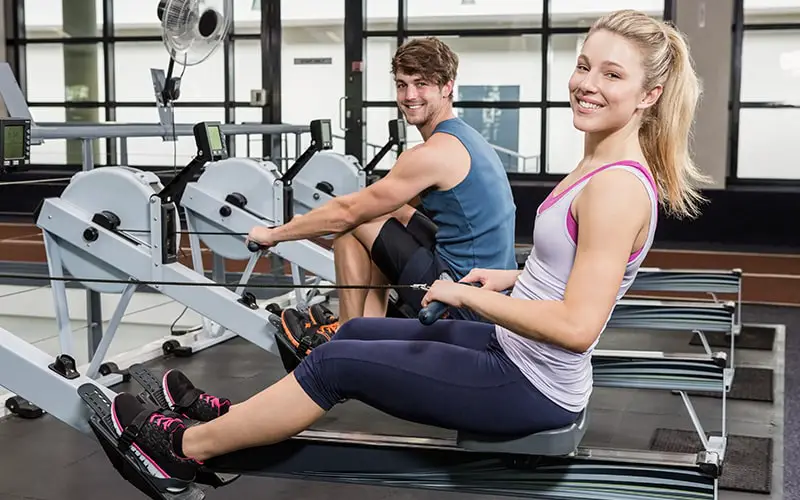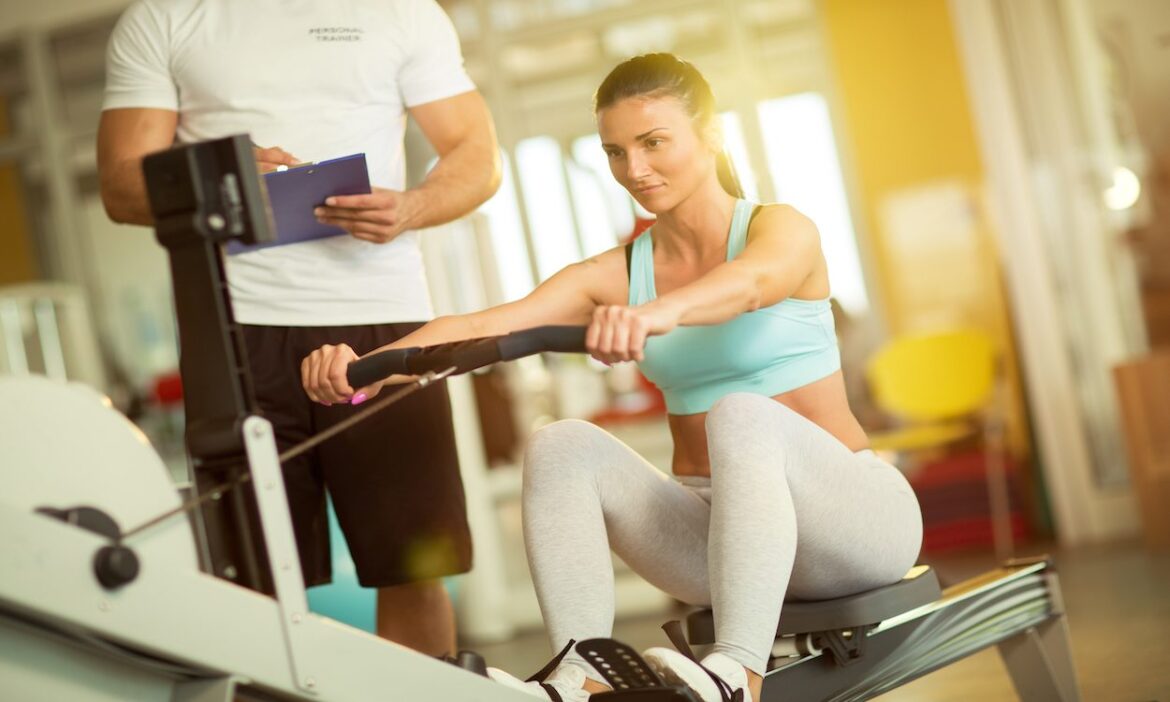Introduction
Are Rowers Good For Weight Loss: In the pursuit of weight loss and overall fitness, individuals often seek efficient and effective exercise options. One such option that has gained attention in recent years is the rowing machine, also known as a rower. Rowing offers a full-body workout that engages multiple muscle groups while providing an excellent cardiovascular challenge. In this article, we will explore the benefits of using rowing machines as a tool for shedding pounds and achieving a healthier body composition. We will delve into the science behind rowing for weight loss, its advantages, and how to incorporate it into your fitness routine for optimal results.
Whether you are a seasoned fitness enthusiast or a beginner on your weight loss journey, understanding the potential of rowing machines can help you make informed decisions about your exercise regimen. Most rowing machines allow you to adjust the resistance level, allowing you to tailor the workout to your fitness level. This adaptability means rowing can be suitable for both beginners and advanced athletes.
Rowing can increase your metabolic rate, leading to a phenomenon known as excess post-exercise oxygen consumption (EPOC). After a challenging rowing session, your body continues to burn calories at an elevated rate as it recovers and repairs, aiding in weight loss. Rowing not only burns fat but also helps build lean muscle mass. Increased muscle mass can boost your metabolism, making it easier to maintain a healthy weight.

Can I lose weight rowing 20 minutes a day?
Rowing for 15-20 minutes every day can help a person lose about 0.5 lbs. per week or more depending on their current state of health. The more “out of shape” you are, the easier and faster you will be able to lose weight.
Calorie Burn
The effectiveness of a 20-minute rowing session for weight loss depends on various factors, with calorie burn being a primary consideration. Rowing is a high-intensity, low-impact exercise that can burn a significant number of calories, even in a short time. The exact number of calories burned during a 20-minute rowing session will vary based on factors like your body weight, intensity, and rowing technique. On average, a person weighing around 155 pounds can burn approximately 260-300 calories in 20 minutes of moderate-intensity rowing.
Consistency
While a single 20-minute rowing session can burn calories and contribute to weight loss, consistency is key. To see meaningful results, it’s essential to make rowing a regular part of your fitness routine. Aim for at least 150 minutes of moderate-intensity aerobic exercise per week, as recommended by health guidelines. If you row for 20 minutes a day, five days a week, you’ll meet this guideline.
Intensity
The intensity of your rowing workout also plays a significant role in weight loss. Higher-intensity workouts, such as interval training or high-intensity interval rowing (HIIT), can maximize calorie burn in a shorter time. If you only have 20 minutes to spare, consider incorporating interval training, where you alternate between short bursts of high-intensity rowing and periods of lower intensity or rest.
Can you lose weight with just a rower?
The full body nature of rowing makes it a huge Calorie burner: in a few minutes a day, you’ll burn more Calories on the indoor rower than you would on a machine that doesn’t engage as many muscle groups.
The Role of Exercise in Weight Loss
Weight loss is fundamentally a matter of creating a calorie deficit, which means burning more calories than you consume. Exercise is a key component of this equation, as it helps increase your daily energy expenditure. When you engage in physical activity like rowing, you burn calories, and over time, this can contribute to weight loss.
Rowing for Weight Loss
Full-Body Workout: Rowing engages multiple muscle groups, including your legs, back, core, arms, and shoulders. This comprehensive activation results in a higher calorie burn compared to exercises that focus on specific body parts.
Cardiovascular Benefits: Rowing provides an effective cardiovascular workout, helping improve your heart health and endurance. This increased cardiovascular fitness can enhance your ability to burn calories during workouts.
Low-Impact Exercise: Rowing is a low-impact exercise, making it suitable for individuals with joint issues or those who want to minimize the risk of injury. It’s gentler on the joints compared to high-impact activities like running.
Caloric Burn: Depending on your intensity level, a rowing workout can burn a substantial number of calories. On average, a person weighing around 155 pounds can burn approximately 260-300 calories in 30 minutes of moderate-intensity rowing.
How much rowing should I do to lose weight?
Thirty minutes of rowing is enough to reap physical benefits like better heart health, strength, and even weight loss. The key here is consistency and how frequently you row. If you only do it once a week, that falls far below 150 minutes of moderate-intensity exercise recommended by the CDC.
Establishing a Calorie Deficit
Weight loss primarily hinges on creating a calorie deficit, which means burning more calories than you consume. Rowing contributes to this deficit by burning calories during your workouts. The key is to find a balance between calorie expenditure through exercise and calorie intake through your diet.
Health Guidelines
According to health guidelines from organizations like the American Heart Association, adults should aim for at least 150 minutes of moderate-intensity aerobic exercise per week. This equates to 30 minutes of moderate-intensity exercise five days a week. Rowing can be considered a moderate-intensity exercise, and meeting this guideline can contribute to weight loss.
Calories Burned While Rowing
The number of calories you burn while rowing depends on several factors, including your body weight, the intensity of your workout, and the duration of your session. On average, a person weighing around 155 pounds can burn approximately 260-300 calories in 30 minutes of moderate-intensity rowing. Heavier individuals may burn more calories, while lighter individuals may burn fewer.
Does rowing help skinny fat?
May promote fat loss
Exercises like rowing help mobilize fats in your body so that they can be used as energy (3, 4 , 5 ). A nutritious diet that provides fewer calories than you burn may also help burn fat.
Rowing and Cardiovascular Health
Rowing is an excellent cardiovascular exercise that can help improve heart health and overall fitness. It elevates your heart rate, increasing the efficiency of your cardiovascular system. Regular rowing can reduce the risk of cardiovascular diseases and improve your body’s ability to burn calories, including fat.
Muscle Building
One of the key aspects of addressing a skinny fat physique is building lean muscle mass. Rowing engages multiple muscle groups, including the legs, back, core, arms, and shoulders. Over time, consistent rowing can help you develop muscle tone and definition, transforming your body composition.
Calorie Burn
Rowing can burn a significant number of calories, which is essential for reducing body fat. The more intense and longer your rowing sessions, the more calories you’ll burn. Achieving a calorie deficit—where you burn more calories than you consume—is crucial for losing fat.
Full-Body Workout
Rowing offers a comprehensive, full-body workout that targets various muscle groups simultaneously. This multifaceted approach not only burns calories during the workout but also contributes to muscle development and overall strength.
Can rowing burn belly fat?
It’s no secret that belly fat is notoriously stubborn, but with the right workout routine, you can target this area and achieve the results you want. Rowing is an excellent workout for burning belly fat because it combines cardio and strength training in one comprehensive workout.
Calorie Burn and Belly Fat
To burn belly fat effectively, it’s essential to create a calorie deficit, where you burn more calories than you consume. Rowing can contribute to this calorie deficit, as it is a calorie-burning exercise that can help you shed excess body fat, including fat stored in the abdominal area.
Cardiovascular Exercise
Rowing is a cardiovascular exercise that elevates your heart rate and increases your metabolic rate. Engaging in regular cardiovascular activities, such as rowing, can help reduce overall body fat, including visceral fat stored in the belly area.
Full-Body Engagement
Rowing provides a comprehensive full-body workout that engages various muscle groups, including the legs, back, core, arms, and shoulders. This full-body engagement not only burns calories during the workout but also boosts muscle development. Increased muscle mass can elevate your resting metabolic rate, allowing you to burn more calories throughout the day, even when you’re not exercising.
Is it OK to row every day?
While we recommend having a rest day between workout days a few times per week, if you’re smart about how you train, you can row everyday without overdoing it. It’s a good idea to alternate between light days and hard days.
The Benefits of Rowing Every Day
Consistency: Rowing every day can help you establish a consistent exercise routine. Consistency is essential for making progress and achieving your fitness goals, whether they involve weight loss, muscle toning, or improved endurance.
Cardiovascular Health: Daily rowing can significantly improve your cardiovascular health. It increases your heart rate, which, over time, can enhance your heart’s efficiency, lower resting heart rate, and reduce the risk of heart disease.
Muscle Strength and Endurance: Rowing engages multiple muscle groups, making it an effective strength-building exercise. Daily rowing can help increase muscle strength and endurance throughout your body.
Weight Management: Rowing burns a substantial number of calories. If your goal is weight management or fat loss, daily rowing can contribute to a calorie deficit when combined with a balanced diet.
Stress Reduction: Exercise, including rowing, releases endorphins, which can help reduce stress and improve overall mental well-being. Daily rowing can provide daily stress relief.
Does rowing reduce waist size?
Yes, when used effectively, a row machine will help lose belly fat and tone your stomach. There are several ways that a rower can be used to target the midsection. The best is to incorporate other exercises such as push-ups, pikes, and planks.
Fat Loss and Waist Size
The relationship between fat loss and waist size is significant. Excess fat around the midsection, often referred to as visceral fat, is linked to an increased risk of health problems, including heart disease, type 2 diabetes, and metabolic disorders. Reducing overall body fat can lead to a reduction in waist size.
Rowing and Calorie Burn
Rowing is a calorie-burning exercise that can help create a calorie deficit—the key to fat loss. When you burn more calories through exercise and daily activities than you consume through your diet, your body starts using stored fat for energy, including fat around the waistline.
Full-Body Engagement
Rowing offers a full-body workout that engages multiple muscle groups, including the legs, back, core, arms, and shoulders. This comprehensive engagement not only burns calories during the workout but also promotes muscle development throughout the body.
Cardiovascular Benefits
Rowing is an excellent cardiovascular exercise that elevates your heart rate and increases your metabolic rate. Engaging in regular cardiovascular activities, such as rowing, can contribute to overall fat loss and, subsequently, a reduction in waist size.
What is better rowing or running?
Running burns more calories
Running has been found to burn more calories than rowing if done at similar intensity levels over the same period of time. However, your specific calorie burn also depends on your proficiency in both sports.
Impact on Joints
Running: Running is a high-impact exercise that can place stress on the joints, particularly the knees and hips. This can lead to an increased risk of injury, especially for those with joint issues.
Rowing: Rowing is a low-impact exercise that minimizes stress on the joints. It’s a suitable choice for individuals with joint problems or those looking for a gentler workout.
Versatility
Running: Running is versatile and can be done almost anywhere with minimal equipment. It’s an excellent option for outdoor enthusiasts.
Rowing: Rowing requires access to a rowing machine, which may limit its accessibility. However, rowing machines can be used indoors, providing a consistent workout environment.
Muscular Development
Running: Running primarily targets the lower body muscles, which can lead to improved leg strength and muscle tone. It offers limited upper-body muscle engagement.
Rowing: Rowing engages both upper and lower body muscles, promoting overall muscle development and balance.

Conclusion
Rowing’s low-impact nature ensures that it can be suitable for people of various fitness levels and those with joint issues or injuries, enabling a broader range of individuals to engage in effective workouts. Moreover, the flexibility of rowing machines allows users to adjust the intensity and duration of their workouts, making it a versatile tool for weight loss.
However, it is essential to remember that successful weight loss is achieved through a combination of factors. While rowing contributes significantly to calorie burning and fitness improvement, it should be complemented with a balanced diet, proper hydration, and overall healthy lifestyle choices.
Incorporating rowing into your regular exercise routine, maintaining consistency, and gradually increasing the intensity can help you achieve your weight loss goals effectively. When combined with proper nutrition and an overall commitment to a healthier lifestyle, rowing can play a pivotal role in helping you attain and sustain your desired weight and fitness level.

